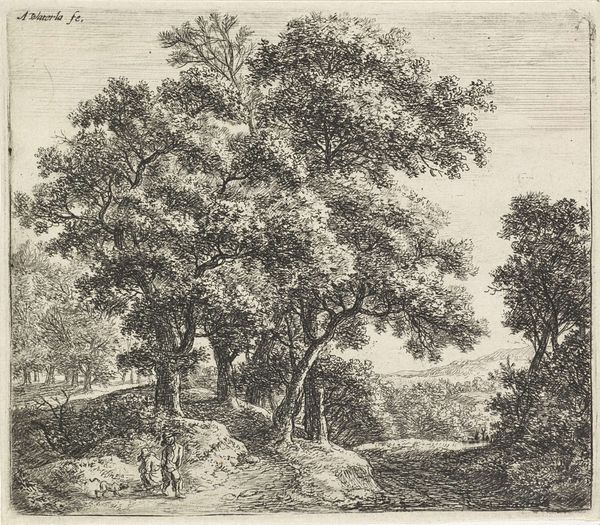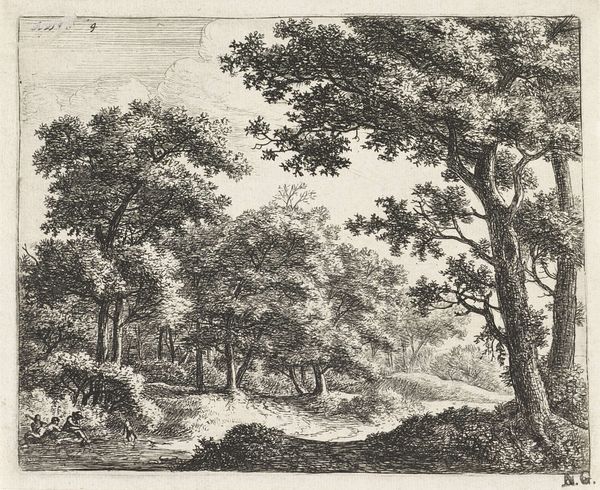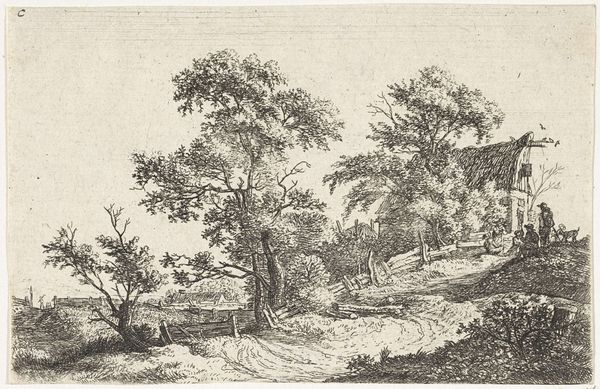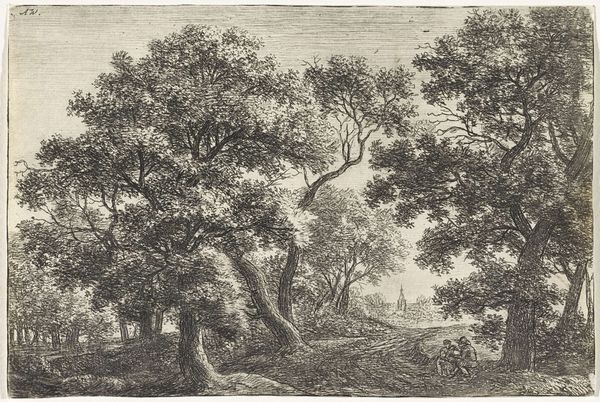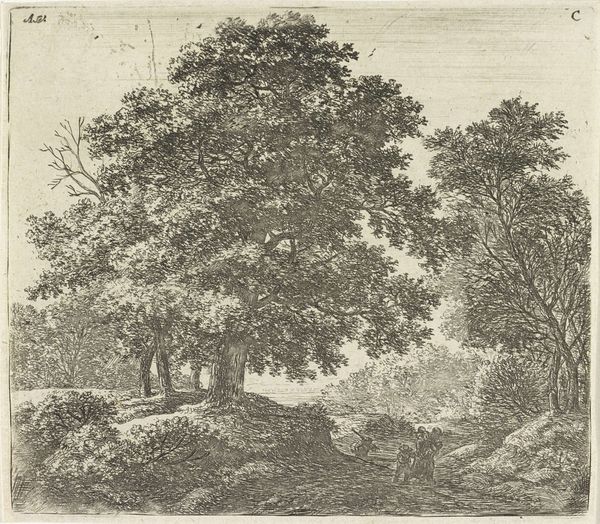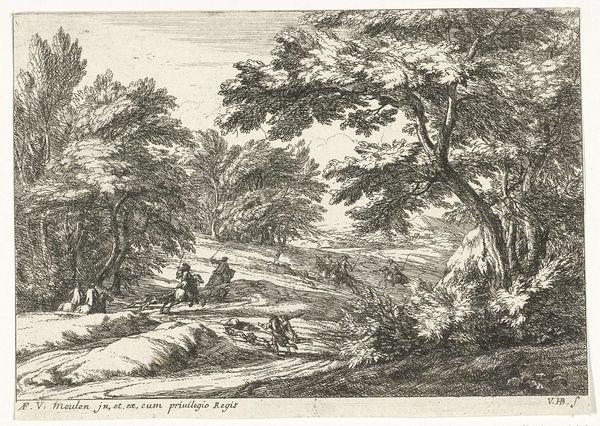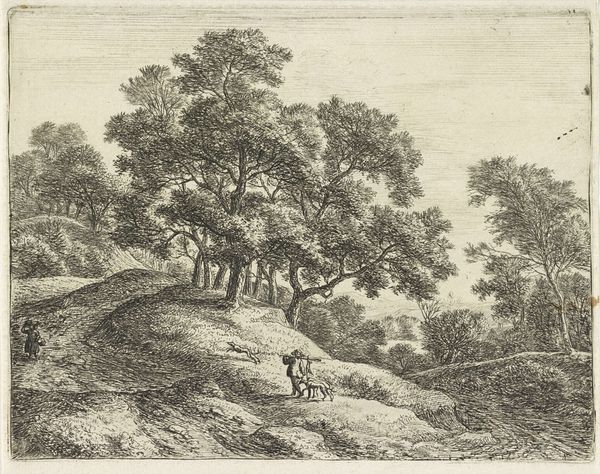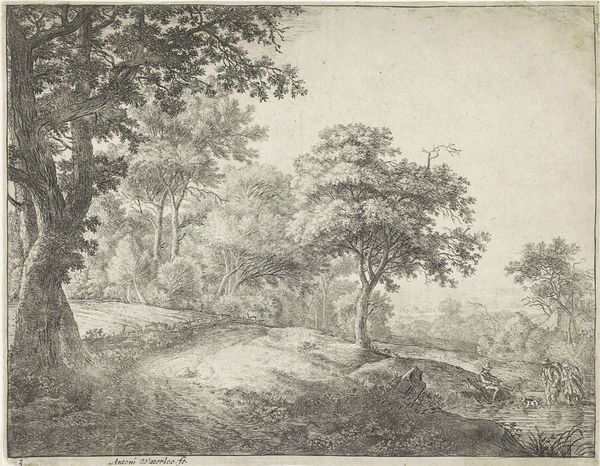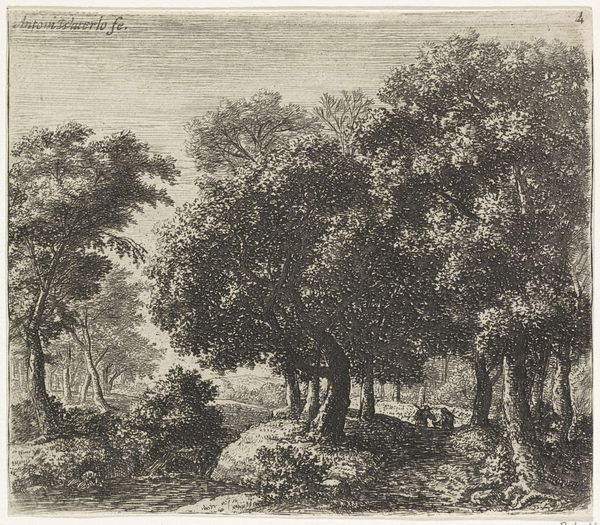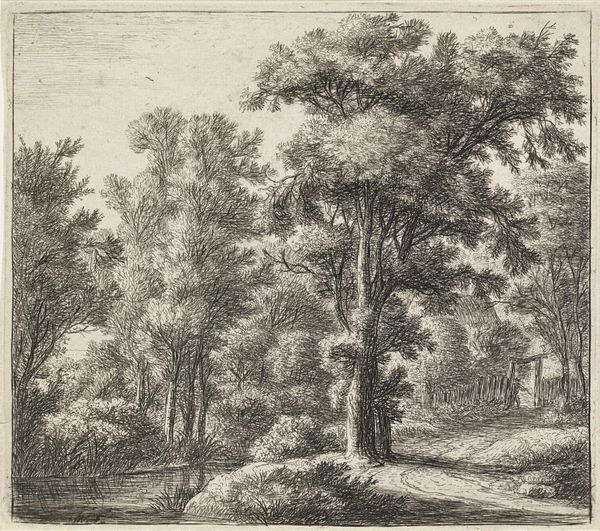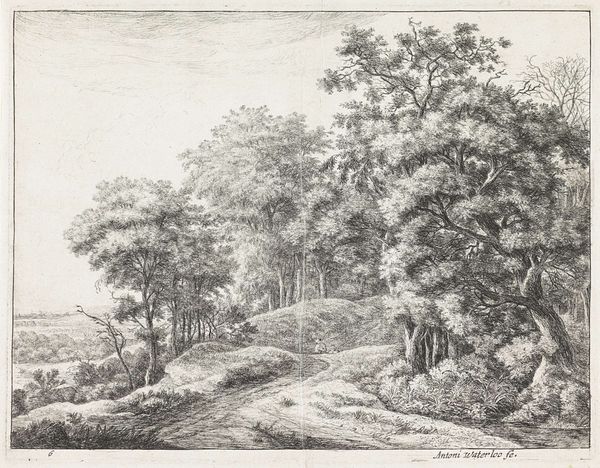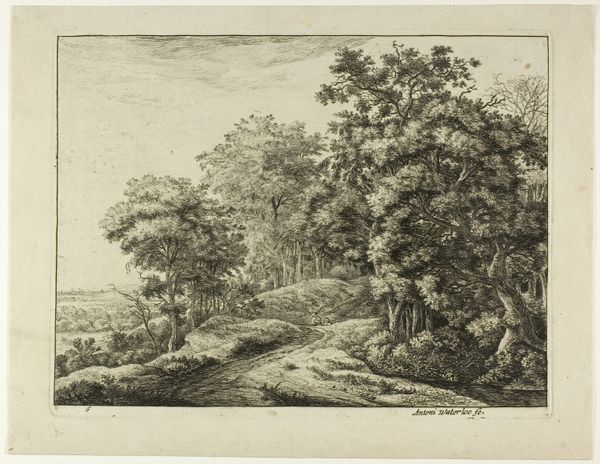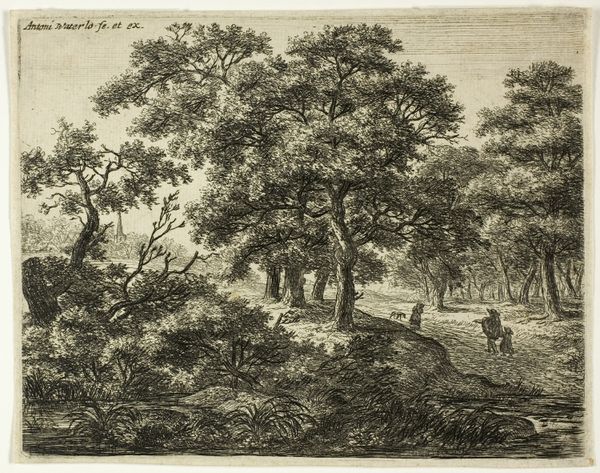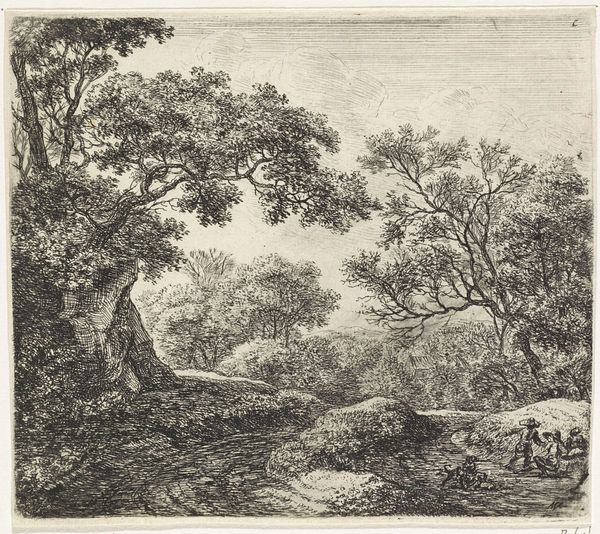
print, etching
#
baroque
#
dutch-golden-age
# print
#
etching
#
landscape
#
figuration
#
line
Dimensions: height 136 mm, width 168 mm
Copyright: Rijks Museum: Open Domain
Editor: So, here we have "Bathing Figures in a Forest" by Anthonie Waterloo, it's an etching and its dating is quite broad, somewhere between 1630 and 1717. I am immediately drawn to how small the figures are within the vast landscape. It creates a real sense of the insignificance of man against nature. What symbols or imagery jump out to you? Curator: The figures themselves are reduced, aren't they? They are part of something far greater, almost returning to the waters as a source. Consider the recurring symbolism of the forest throughout history: a place of mystery, transformation, and often, of purification. The figures engaging in a ritual cleansing almost, against the backdrop of daily life represented by the buildings on the horizon. Editor: Purification…that’s an interesting interpretation. Do you see a connection with Dutch Golden Age ideas about nature? Curator: Yes, very much so. The Dutch Golden Age landscapes weren't simply representations of the physical world; they carried moral and sometimes religious weight. The carefully observed details—the texture of the trees, the way light falls, and of course the water--served as reminders of God’s creation, yet there's almost something pagan about returning to water. A pre-Christian sensibility lurking in the shadows. Do you get that sense? Editor: I hadn’t considered that, but yes, seeing it as less overtly religious opens up a new dimension. I initially viewed it as the common "man vs nature" theme but you've shown it may have older, more personal meanings too. Curator: Exactly, and it’s through exploring these symbols and the continuity of these ideas across time that art continues to speak to us. Hopefully, this piece allows you to ponder how nature, and water particularly, have been a place of contemplation throughout the ages.
Comments
No comments
Be the first to comment and join the conversation on the ultimate creative platform.
